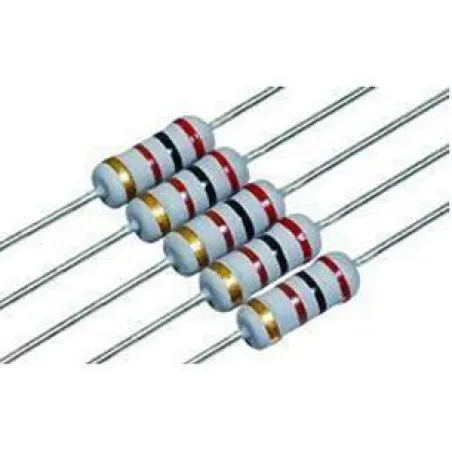What are the different types and applications of resistors?
Resistors are fundamental components in electronic circuits, playing a crucial role in controlling the flow of electric current. Understanding the various types of resistors is essential for both novice electronics enthusiasts and seasoned engineers. In this comprehensive guide, we delve into the diverse world of resistors, exploring their types and applications.
Fixed Resistors
Carbon Composition Resistors
One of the oldest types, carbon composition resistors consist of a solid cylindrical core with a carbon-based material. While not as precise as some modern alternatives, they are reliable and cost-effective, making them suitable for general applications.
Metal Film Resistors
Known for their stability and accuracy, metal film resistors feature a thin metal film on a ceramic rod. These resistors offer better performance in terms of tolerance and temperature stability compared to carbon composition resistors.
Metal Oxide Resistors
Similar to metal film resistors, metal oxide resistors utilize a ceramic rod. The key difference lies in the material composition, with metal oxide providing enhanced performance in terms of stability and reliability, particularly in high-temperature environments.
Variable Resistors
Rheostats
Rheostats are adjustable resistors that allow users to manually change the resistance in a circuit. Commonly used for dimming lights or controlling motor speed, rheostats provide variable resistance by adjusting the length of the resistive material.
Potentiometers
Potentiometers, or pots, function as variable voltage dividers. They consist of a resistive track and a wiper that can be adjusted to alter the output voltage. Potentiometers find applications in audio equipment for volume control and in various electronic devices for user interface adjustments.
Specialized Resistors
Light-Dependent Resistors (LDRs)
LDRs exhibit a resistance that varies with light intensity. Widely used in light-sensitive applications such as streetlights and camera exposure controls, LDRs are crucial for creating adaptive electronic systems.
Thermistors
Thermistors are temperature-sensitive resistors that experience a significant change in resistance with temperature variations. Divided into positive temperature coefficient (PTC) and negative temperature coefficient (NTC) types, thermistors are employed in temperature sensing, compensation, and control circuits.
Applications of Resistors
Understanding the characteristics of different resistors is pivotal in selecting the right component for specific applications:
Audio Equipment: Potentiometers play a vital role in adjusting volume levels.
LED Circuits: Current-limiting resistors prevent damage to LEDs by controlling the current flow.
Temperature Control: Thermistors are integral in temperature-sensitive applications like climate control systems.
Voltage Regulation: Fixed resistors contribute to stable voltage levels in electronic circuits.
Conclusion
Resistors, in their myriad forms, are the unsung heroes of electronic circuits. From controlling current flow to enabling nuanced adjustments in various devices, the diverse types of resistors cater to a wide range of applications. Whether you're a hobbyist tinkering with DIY projects or a professional engineer designing intricate electronic systems, a solid understanding of resistor types empowers you to make informed choices in your electronic endeavors.


评论
发表评论